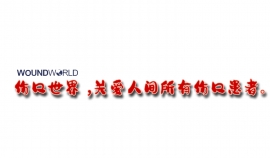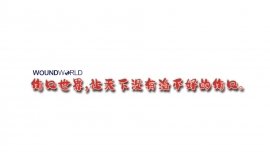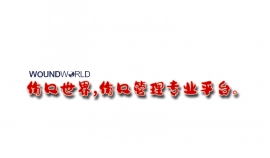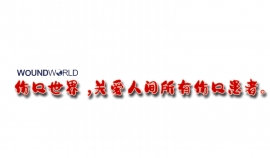
伤口世界

- 星期三, 25 9月 2024
A New Ten-item Questionnaire For Assessing Sensitive Skin: The Sensitive Scale-10
Laurent Misery 1,2 , Catherine Jean-Decoster3 , Sophie Mery 3 , Victor Georgescu 3 and Vincent Sibaud 3 1 Laboratory of Neurosciences of Brest, University of Western Brittany, 2 Department of Dermatology, University Hospital of Brest, Brest, and 3 Dermatological Laboratories Avène, Lavaur, France
Sensitive skin is common but until now there has been no scale for measuring its severity. The Sensitive Scale is a new scale with a 14-item and a 10-item version that was tested in 11 countries in different languages on 2,966 participants. The aim of this study was to validate the pertinence of using the Sensitive Scale to measure the severity of sensitive skin. The internal consistency was high. Correlations with the dry skin type, higher age, female gender, fair phototypes and Dermatology Life Quality Index were found. Using the 10-item version appeared to be preferable because it was quicker and easier to complete, with the same internal consistency and the 4 items that were excluded were very rarely observed in patients. The mean initial scores were around 44/140 and 37/100. The use of a cream for sensitive skin showed the pertinence of the scale before and after treatment. Key words: sensitive skin; DLQI; scale; severity; questionnaire.
Accepted Apr 2, 2014; Epub ahead of print Apr 7, 2014
Acta Derm Venereol 2014; 94: 635–639.
Prof Laurent Misery, Department of Dermatology, University Hospital of Brest, 2 avenue Foch, FR-29200 Brest, France. E-mail: 该Email地址已收到反垃圾邮件插件保护。要显示它您需要在浏览器中启用JavaScript。
© 2014 The Authors. doi: 10.2340/00015555-1870 Journal Compilation © 2014 Acta Dermato-Venereologica. ISSN 0001-5555

- 星期二, 24 9月 2024
|开放获取·指南与共识|保湿润肤类产品应用指导专家共识(2023版)
保湿润肤类产品应用指导专家共识(2023版)
中国医师协会皮肤科医师分会
通信作者:郝飞,Email:该Email地址已收到反垃圾邮件插件保护。要显示它您需要在浏览器中启用JavaScript。;高兴华,Email:该Email地址已收到反垃圾邮件插件保护。要显示它您需要在浏览器中启用JavaScript。
Guidance on application of moisturizers and emollients: an expert consensus (2023)
China Dermatologist Association
Corresponding authors: Hao Fei, Email: 该Email地址已收到反垃圾邮件插件保护。要显示它您需要在浏览器中启用JavaScript。; Gao Xinghua, Email: 该Email地址已收到反垃圾邮件插件保护。要显示它您需要在浏览器中启用JavaScript。

- 星期一, 23 9月 2024
茶叶预防衰老及衰老相关疾病研究进展
戴申,鹿颜,余鹏辉,龚雨顺*,刘仲华*
湖南农业大学园艺园林学院,国家植物功能成分利用工程技术研究中心,茶学教育部重点实验室,湖南 长沙 410128
摘要:综述了茶叶及其主要功能成分茶多酚、茶氨酸和咖啡碱对秀丽线虫、果蝇及老鼠等多种模式生物的抗衰老作用;概述了茶叶预防衰老相关疾病的保健功能;阐述了茶叶通过调节能量感应网络延缓衰老的研究现状;简单讨论了今后茶叶抗衰老研究的方向。
关键词:茶;抗衰老;能量感应网络
中图分类号:S571.1 文献标识码:A 文章编号:1000-369X(2019)01-023-11
Research Progress of The Preventing Effects of Tea on Aging and Aged-related Pathologies
DAI Shen, LU Yan, YU Penghui, GONG Yushun*, LIU Zhonghua*
Hunan Agriculture University, College of Horticulture and Landscape, National Engineering Center of Plant Functional Components Utilization, Key Lab of Tea Science, Changsha 410128, China
Abstract: In this paper, the anti-aging effects of tea in model organisms such as Caenorhabditis elegans, Drosophila flies and mice were reviewed. The main functional components (tea polyphenols, theanine and caffeine) were especially emphasized. The beneficial functions of tea in preventing age-related diseases were summarized. Furthermore, the latest research on its mechanism of regulating the nutrient-sensing signaling networks was expounded. Finally, the future research direction was briefly discussed.
Keywords: tea, anti-aging, nutrient-sensing signaling networks
收稿日期:2018-08-27 修订日期:2018-09-20
基金项目:湖南省自然科学基金(No. 2018JJ2161)
作者简介:戴申,女,硕士研究生,主要从事茶叶功能成分化学研究。*通信作者:该Email地址已收到反垃圾邮件插件保护。要显示它您需要在浏览器中启用JavaScript。,该Email地址已收到反垃圾邮件插件保护。要显示它您需要在浏览器中启用JavaScript。

- 星期五, 20 9月 2024
Diabetes remission in the real world
Pam Brown
GP in Swansea
Citation: Brown P (2024) Diabetes Distilled: Diabetes remission in the real world. Diabetes & Primary Care 26: 145–7
Diabetes remission is achievable at scale in the real world, according to early results from the NHS Type 2 Diabetes Path to Remission programme published in Lancet Diabetes & Endocrinology. Of 7540 people referred to the programme between September 2020 and December 2022, a total of 1740 started the total diet replacement section of the programme before January 2022, and 960 (55%) completed the programme. Mean weight loss for the 1710 who started the programme and had follow-up data available was 9.4 kg (8.3%), with a mean weight loss of 10.3 kg (9.3%) among the 945 who completed the programme. Amongst the 945 who completed the programme and had two HbA1c measurements, 32% achieved remission, with mean weight loss of 15.9 kg (14.4%), while overall 27% of those who started the programme achieved remission regardless of whether they completed. Remission rates are lower than in trials such as DiRECT and DIADEM-I, despite similar levels of weight loss. The authors highlight that an additional 17% of participants met the HbA1c targets for remission but continued on metformin and may otherwise have achieved remission. These early results confirm that type 2 diabetes remission is indeed possible at scale in the real world, outside of clinical trials.

- 星期四, 19 9月 2024
Impact of metformin timing on glucose and GLP-1 response
Pam Brown GP in Swansea
Citation: Brown P (2024) Diabetes Distilled: Impact of metformin timing on glucose and GLP-1 response. Diabetes & Primary Care 26: 143–4
Glucose-lowering effects in response to normal-release metformin are greater when the drug is given 30 or 60 minutes before, rather than with, food, according to this small study in people with well-controlled type 2 diabetes published in Diabetologia. Endogenous GLP-1 secretion increased when metformin 1000 mg was given 30 or 60 minutes prior to a glucose infusion, whereas there was no increase when the metformin was administered at the same time as the glucose. The results suggest that, if tolerated, administering standard release metformin before meals may lead to improved postprandial glycaemic control.

- 星期三, 18 9月 2024
The importance of getting the correct diabetes diagnosis
Jane Diggle Specialist Diabetes Nurse Practitioner, West Yorkshire
Citation: Diggle J (2024) The importance of getting the correct diabetes diagnosis. Diabetes & Primary Care 26: 111–2
